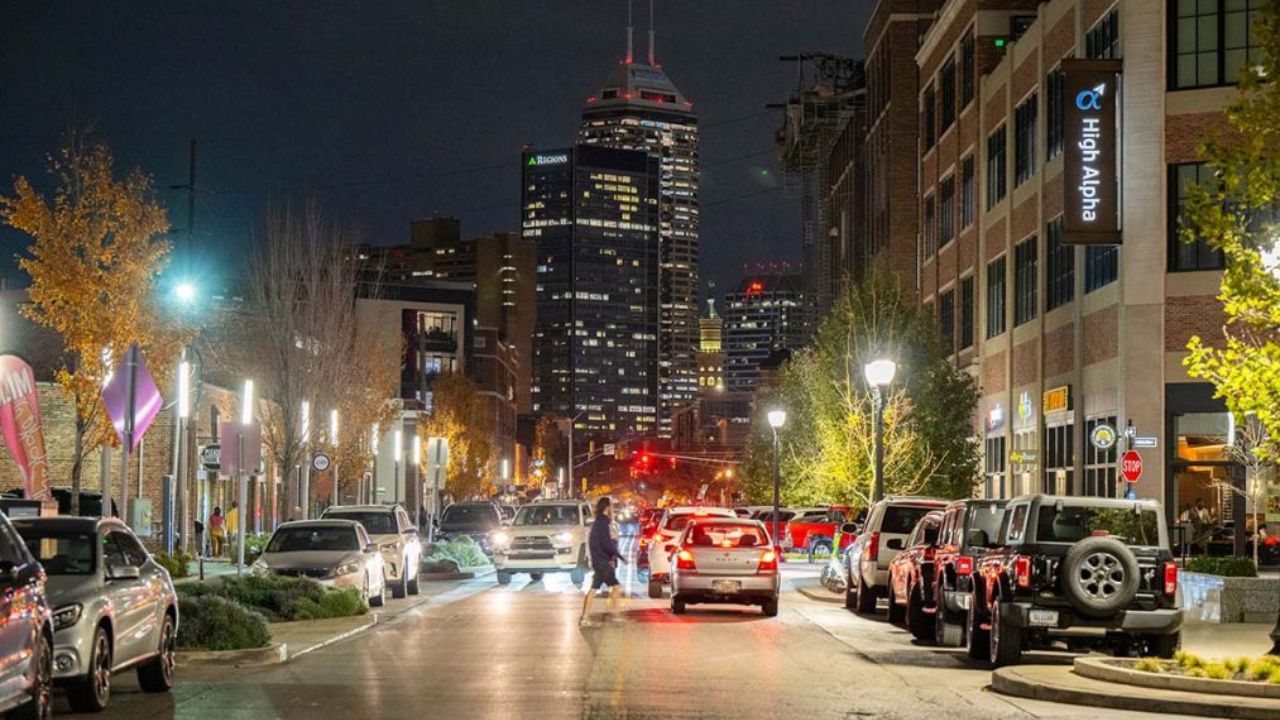Indiana, also known as the Hoosier State, is home to more than 6.7 million people. The state is known for its diverse economy, rich history, and famous sports teams. However, not all towns in Indiana are thriving. Some are facing various challenges, such as declining population, high crime rate, low income, poor education, and environmental issues. These are the towns that people are fleeing as soon as possible, according to the latest census data and other sources.
7. Gary
Gary is a city in Lake County, with a population of 74,879 as of 2020. The city’s population decreased by more than 25% from 2010 to 2020, making it one of the fastest shrinking cities in Indiana. Gary is also notorious for its high crime rate, ranking as the most dangerous city in Indiana and the 12th most dangerous city in the US. The city’s poverty rate is 36.4%, which is more than double the state average. The median household income is $31,045, which is less than half of the state average. The city’s unemployment rate is 9.4%, which is almost twice the state average. Gary’s public schools are also struggling, with low graduation rates, test scores, and funding.
6. Muncie
Muncie is a city in Delaware County, with a population of 67,999 as of 2020. The city’s population decreased by more than 7% from 2010 to 2020, making it one of the largest cities in Indiana to lose population. Muncie is also facing a high crime rate, ranking as the 10th most dangerous city in Indiana and the 94th most dangerous city in the US. The city’s poverty rate is 28.8%, which is almost twice the state average. The median household income is $36,561, which is about two-thirds of the state average. The city’s unemployment rate is 7.2%, which is higher than the state average. Muncie’s public schools are also underperforming, with low graduation rates, test scores, and funding.
5. Marion
Marion is a city in Grant County, with a population of 27,674 as of 2020. The city’s population decreased by more than 11% from 2010 to 2020, making it one of the fastest shrinking cities in Indiana. Marion is also dealing with a high crime rate, ranking as the 8th most dangerous city in Indiana and the 82nd most dangerous city in the US. The city’s poverty rate is 25.9%, which is almost twice the state average. The median household income is $36,064, which is about two-thirds of the state average. The city’s unemployment rate is 7.6%, which is higher than the state average. Marion’s public schools are also lagging behind, with low graduation rates, test scores, and funding.
4. Connersville
Connersville is a city in Fayette County, with a population of 12,418 as of 2020. The city’s population decreased by more than 12% from 2010 to 2020, making it one of the fastest shrinking cities in Indiana. Connersville is also suffering from a high crime rate, ranking as the 7th most dangerous city in Indiana and the 76th most dangerous city in the US. The city’s poverty rate is 24.4%, which is almost twice the state average. The median household income is $33,462, which is about half of the state average. The city’s unemployment rate is 8.8%, which is almost twice the state average. Connersville’s public schools are also struggling, with low graduation rates, test scores, and funding.
3. Hartford City
Hartford City is a city in Blackford County, with a population of 5,815 as of 2020. The city’s population decreased by more than 13% from 2010 to 2020, making it one of the fastest shrinking cities in Indiana. Hartford City is also facing a high crime rate, ranking as the 6th most dangerous city in Indiana and the 72nd most dangerous city in the US. The city’s poverty rate is 22.9%, which is almost twice the state average. The median household income is $38,750, which is about three-fourths of the state average. The city’s unemployment rate is 7.9%, which is higher than the state average. Hartford City’s public schools are also underperforming, with low graduation rates, test scores, and funding.
2. Hammond
Hammond is a city in Lake County, with a population of 75,522 as of 2020. The city’s population decreased by more than 6% from 2010 to 2020, making it one of the largest cities in Indiana to lose population. Hammond is also dealing with a high crime rate, ranking as the 5th most dangerous city in Indiana and the 68th most dangerous city in the US. The city’s poverty rate is 21.9%, which is almost twice the state average. The median household income is $46,782, which is about four-fifths of the state average. The city’s unemployment rate is 7.4%, which is higher than the state average. Hammond’s public schools are also lagging behind, with low graduation rates, test scores, and funding.
1. East Chicago
East Chicago is a city in Lake County, with a population of 27,817 as of 2020. The city’s population decreased by more than 12% from 2010 to 2020, making it one of the fastest shrinking cities in Indiana. East Chicago is also notorious for its high crime rate, ranking as the 4th most dangerous city in Indiana and the 64th most dangerous city in the US. The city’s poverty rate is 35.9%, which is more than double the state average. The median household income is $29,213, which is less than half of the state average. The city’s unemployment rate is 9.9%, which is almost twice the state average. East Chicago’s public schools are also struggling, with low graduation rates, test scores, and funding.
Conclusion
These are the seven Indiana towns that people are fleeing as soon as possible, according to the latest census data and other sources. They are characterized by high crime rates, low incomes, poor education, and environmental issues. They are not very attractive places to live in, and many residents are looking for better options elsewhere. However, these towns are not hopeless. With proper planning, investment, and leadership, they can overcome their challenges and revitalize their communities. Indiana has many other towns that are growing, thriving, and offering a high quality of life. These are the towns that people are flocking to as soon as possible.

